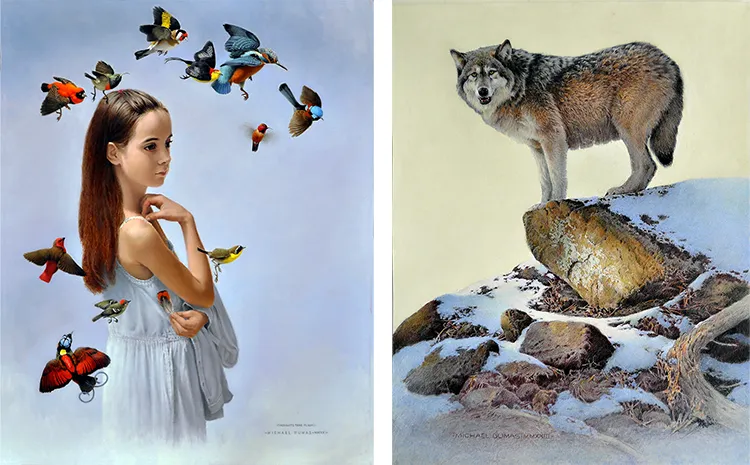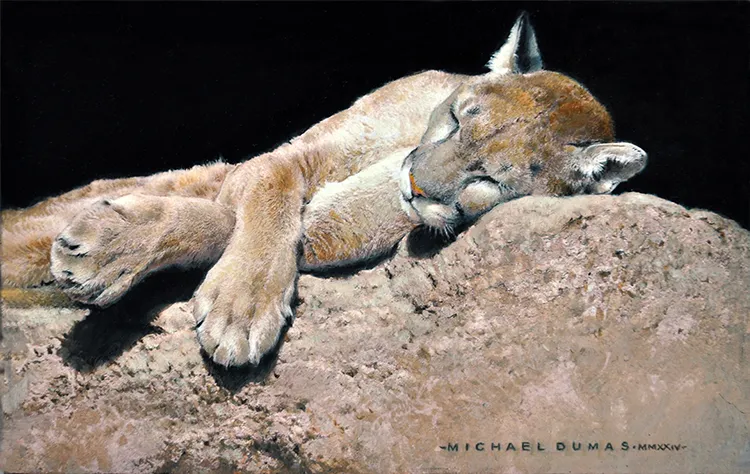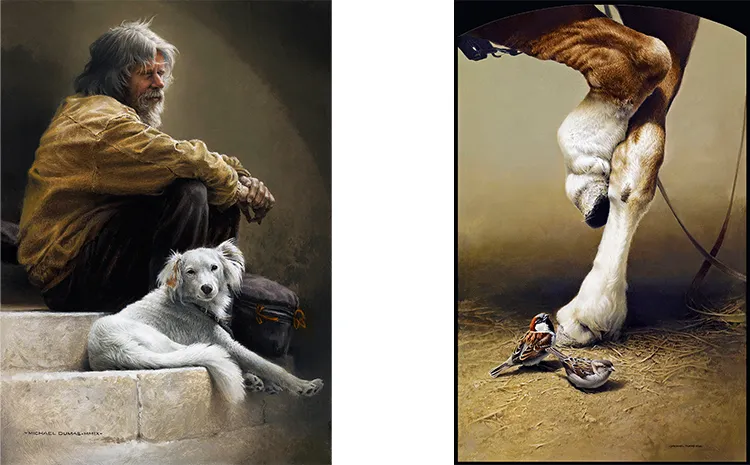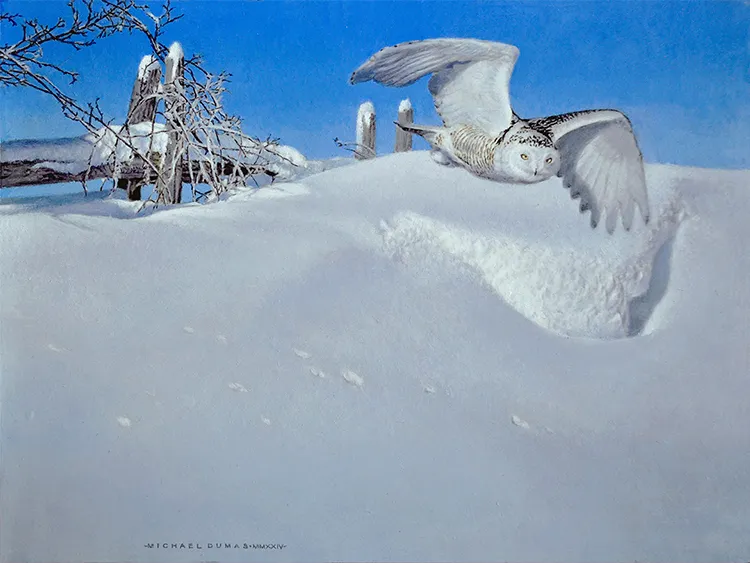“I don’t recall a decision to be an artist, it was simply a strong desire that could not be ignored.”
Roots of Inspiration in Nature and Home
Growing up in Whitney, Ontario, a small village at the edge of Algonquin Provincial Park, Michael Dumas was surrounded by a vast wilderness of granite hills, deep forests, and a labyrinth of lakes, rivers, and streams. This setting profoundly influenced his artistic journey from a young age, igniting a lifelong passion for the natural world. Dumas’s earliest attempts at art were reflections of his surroundings, as he sought to capture the essence of the wild in his drawings and paintings.
Parallel to his fascination with nature was an interest in the familiar sights around his home and the rural farms nearby. As a child, he would traverse the field to his aunt and uncle’s property, spending hours in their chicken enclosure sketching the birds. Despite his young age, Dumas exhibited a relentless drive for improvement, always returning with the promise to draw better the next day. These experiences were not just practice; they were formative, instilling in him a deep appreciation for observation and the discipline of art.
His work as a forest ranger in Algonquin Park during his art school years further deepened his connection to nature. Spending extensive periods in the park’s interior allowed Dumas to intimately understand the wilderness and its inhabitants, enriching his artistic perspective. This period of his life reinforced the notion that his art was a means to make sense of the world around him, a principle that continues to underpin his work today.

Michael Dumas: The Path to Artistic Mastery
Michael Dumas’s path to becoming a distinguished artist did not involve a conscious decision; rather, it was a powerful, undeniable drive that shaped his life. Drawing and painting were as natural to him as breathing, with his mother preserving his early artwork as testament to his innate talent. Despite the lack of formal art education during his childhood, Dumas pursued his passion through a correspondence course with Art Instruction Schools and later at Humber College University, where he specialized under the guidance of master artist Lewis Parker.
Parker’s mentorship was pivotal, providing Dumas with a solid foundation in drawing and observation. Following his post-graduate studies, Dumas apprenticed with Parker in his Toronto studio, refining his skills and transitioning into a career as a freelance illustrator. A significant turning point came when he met Edwin Matthews, who became his agent and supported his nature art, allowing Dumas to focus more on his passion for painting.
Throughout his career, Dumas has maintained a realistic style infused with personal experiences and interests. His work emphasizes a meaningful relationship between artist and subject, selectively including details that resonate with him. This selective realism creates an illusion that engages viewers, subtly drawing them into his world. His approach to color is similarly restrained, using a limited palette to enhance the emotional impact of his paintings.

Crafting a Personal Artistic Space
Michael Dumas’s studio is a sanctuary tailored to his creative process. Attached yet separate from his home, it provides an environment designed for focus and inspiration. The workspace features a custom desk, optimal lighting, and a bank of north-facing windows, ensuring the perfect conditions for painting. The studio is also equipped with shelves for reference materials, a computer station for research, and a sitting area for contemplation and visitors.
This carefully curated space reflects Dumas’s commitment to his craft and his ability to handle distractions through a policy of privacy and regular work hours. His studio is adorned with natural specimens and antique implements, serving as reference points for his nature and rural-themed artworks. This environment supports his meticulous approach to art, allowing him to immerse himself in his subjects fully.
Over the years, Dumas’s influences have evolved, but the impact of early inspirations like Fenwick Lansdowne, Glen Loates, Andrew Wyeth, and Jan Vermeer remains evident in his work. However, the most significant influence has been Lewis Parker, whose emphasis on drawing and real-life observation profoundly shaped Dumas’s artistic philosophy.

Michael Dumas: Art that Captures Moments of Discovery
One of Michael Dumas’s most cherished pieces, “Trust,” exemplifies his ability to capture unexpected moments of beauty and insight. Inspired by an encounter at a rural plowing match, the painting depicts the hind legs of a workhorse with house sparrows foraging nearby. The composition conveys the delicate balance of trust and the interdependent lives of different species. The unique posture of the horse and the sparrows’ obliviousness to potential danger create a powerful narrative, showcasing Dumas’s talent for finding profound meaning in everyday scenes.
Dumas’s artistic journey has been marked by a lifelong commitment to exploring and expressing his experiences. Over the decades, he has experimented with various mediums, from graphite and oils to watercolors and gouache. Currently, he prefers oils for their versatility and Polychromos color pencils for their sympathetic qualities to his oil work. This adaptability has allowed him to continually evolve his technique, keeping his art fresh and exciting.
Now in his 74th year, Dumas’s passion for painting remains undiminished. He now focuses exclusively on subjects that deeply interest him, often keeping his projects secret until completion. His extensive collection of sketches and notes serves as a wellspring of inspiration, ensuring a constant flow of new ideas. This dedication to his art ensures that each piece is a genuine reflection of his personal experiences and discoveries, maintaining the sense of wonder and excitement that has defined his career.






